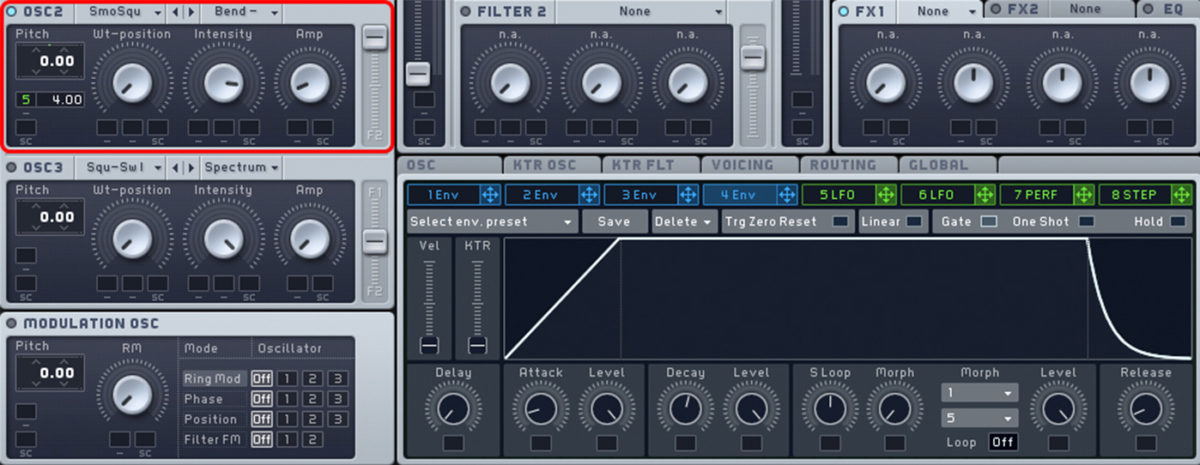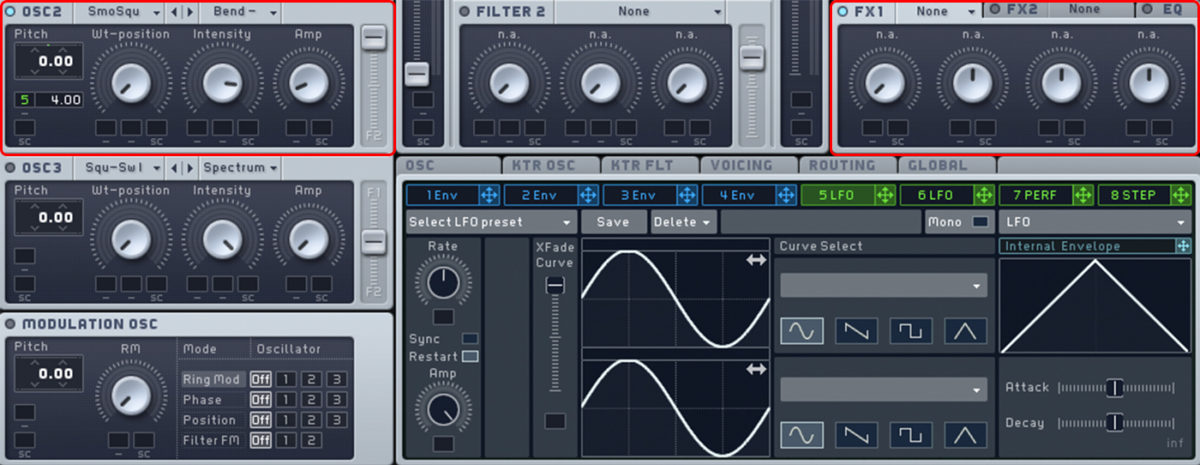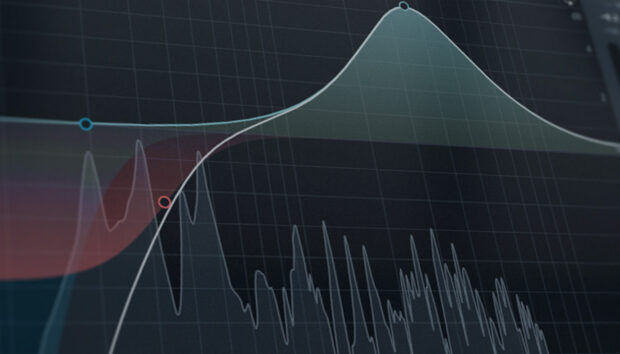
You may have first encountered West Coast producer and beatmaker Ty “Lophiile” Acord via his metalcore band Issues or his killer future bass remixes for the likes of Zedd, Hoodboi, and The Knocks. But in the last couple years, he’s been diving back into early influences like Dilla, Jill Scott, Stevie Wonder and Maxwell to create a warm and original signature that combines the harmonic richness and dusty samples of Golden Era hip-hop and soul with fresh production and mixing techniques. His melodic chops have led to strong collaborations with Alina Baraz, BTS, Freddie Gibbs, and Vic Mensa, in addition to work with legendary jazz label Blue Note. Meanwhile, he’s taking Digable Planets-type dusted neo-soul to new heights with his trio Radiant Children.
For our Real Talk series, I rang up Lophiile in his new home studio in Los Angeles to discuss different ways to keep musicality in your productions. Using resampling, tape effects, and some simple processing and modulation, Lophiile showed some killer tricks for giving stock sounds individual character and keeping your music from sounding stale and canned. Seven of those tricks are below, but for more major keys to mixing drums ‘n’ bass, making patches out of street noise, and one of the most concise explanations of sidechaining around, watch the entire Real Talk episode here.

Work with one oscillator, not ten
When you make crazy basses for dubstep or bass house or whatever, you have very intricate synth patches – there’s things that are FM-ing other things, you have a lot of modulation going on. When the musical ideas and main chords are complex, it usually sounds better when the synth patches are a little bit simpler. What I try to keep in mind is “How interesting can I make the sound without sacrificing the integrity of the harmony?” If I open Massive, which is the synth I learned how to design in, I’ll start with a basic saw. A lot of times I use saws – I just enjoy how warm they can be. I’ve also been using the wavetable to bend the square waves to sound like a saw. So in Oscillator Two in Massive, I’m going to select Smooth Square from the drop-down menu, and then I’m going to click this drop-down menu that says Spectrum to select “Bend Minus.” Then I’ll turn the Intensity knob and this basically bends the square wave, which can be a little bit videogame-y, into this old-school-sounding saw. It sounds really good for chords and things like that.

Shape and filter the wave
After that, I’ll go up here to Filter 1 in Massive just put a low-pass filter on it here in this Waveshaper section. And I’ll just put a very simple movement on it – it’ll just open and close using Envelope One. And now you can tweak the Cutoff knob and you’ve got this really classic kind of horn sound! But it’s just so warm. Pretty James Blake-y! That’s basically the meat of the patch, and then what I’ll do in addition to that is I’ll just add a little bit of modulation and movement to the pitch.

LFOs aren’t just for dubstep
I think some organic pitch modulation is cool – that’s what really creates an interesting sound when something’s maybe a little bit too constant, a little bit too dry. So I put the 5 LFO on the pitch here, make the amp way lower, and now you’ve got this more wavy patch. [see diagram] You can choose the intensity of it, like if you’re doing really old-school synthwave-type stuff, maybe make it a little bit higher. And then sometimes add a little bit of Noise to add that analog-y feel. So now this patch is already ready to go – it’s super simple: one oscillator, one filter. It’s so useful in so many ways. And I’m always trying that same trick with different types of waveforms [from the dropdown menu].

Modulation and movement keep things wavy
I feel like when you make soulful music that has to do with chords, if you have a bunch of plug-in instruments that kind of sound too dry, it starts to sound a little bit like dentist office music. To keep stuff fresh, I like to mess with it a little bit. One thing I really like to do on keys is tape emulation and pitch modulation. I’ll start off using this Kontakt Scarbee Mark 1 electric piano – it’s a great-sounding piano but it’s just a bit straight for what I’m going for. There’s this really cool cassette tape emulator/saturation plug-in called Cassette by Waves Factory that I use. I’m just throwing on this first preset here called ‘Mellow My Harsh’ and it’s already sounding way better. And then sometimes I’ll mix plug-ins just to give it even more movement. I love this plugin from MeldaProduction called MVibrato. And it’s free, so you have no excuse not to get it. It just adds vibrato and if you mix it with the Cassette, you’ve got this really wavy sound.
Tailor your keys and chords
I used to play in one chord pattern and I would just copy-paste it down to all my other layers. But if you just copy the same thing verbatim to everything, the melody starts to get a little bit muddy and less interesting. You can’t really hear what’s going on. But, especially when you’re layering complex chords, what creates better space and gets stuff to fit better is tailoring your voicings to your sound. So I’ve got these chords laid down already and when I play my other keys on top, I’ll replay them a little bit differently because it just calls for the chords to be voiced differently. When you’re doing “musical” stuff, it’s important to see how you can separate and play your different sounds that you’re adding differently so they stand out in the mix better.
Resampling a really, really powerful tool and if you realize that halving and doubling in speed also goes up and down octaves, you can do some really creative stuff.
Take advantage of resampling
Resampling a really, really powerful tool and if you realize that halving and doubling in speed also goes up and down octaves, you can do some really creative stuff. You can use resampling to make things sound old and like a sample. I’ve got Kontakt loaded with this glockenspiel bell-type instrument. I’ll just play this in MIDI as a little line on top, and then I’ll put a tape plug-in on it or something just to give it a little bit of movement – some pitch modulation, some Wow & Flutter, J37 Tape Saturation, whatever. [There’s some really cool free tape & lo-fi effects for Reaktor. Check them out here. – Ed.] And then I’ll double this in speed. You can do that really easily in Ableton on the lower left in the “Notes” section. Then I’ll freeze the track and print it to audio. And when I halve it back down to speed on Repitch, it just goes down an octave, but if you listen to it all the highs are taken away in a really nice way and it sounds like a little bit more lo-fi and just more organic. It sounds way less like you played it on MIDI. I love audio because now I have this in audio I can reverse this and just mess with it even more.
Learn all 12 major scales
For anyone that’s at ground zero as far as musical theory and just wants a jumping off point my recommendation is to learn the major scale on all 12 keys. Start with C major and then just practice that because if you have that ingrained in your mind, learning anything else is going to be easier because you have some sort of reference point. There’s a lot of really good stuff on YouTube. One of my favorites is Jeff Schneider. When I was trying to learn on YouTube a long time ago, a lot of these muso cats were really good at music but not really great teachers. This guy Jeff Schneider is both; he breaks stuff down really easily. Lately, I’ve been obsessed with this guy Ian Kirkpatrick – he did all the Dua Lipa stuff, all the Selena Gomez stuff. We make very different music, but he is insanely good at what he does. One thing he said is that when he sits down to work on music he experiments first. So lately I’ve been doing that and that’s been a really cool change. I just throw a sound in and mess with it, stretch it, resample it and then I’ll have maybe a melody that I could put chords underneath. And like that’s been a really cool way to start.
Real Talk is hosted by Vivian Host (@stareyezzz) every Thursday at 1PM Pacific / 4PM Eastern / 9PM GMT on @nativeinstruments Instagram Live. You can watch the entire Real Talk with Lophiile here, and see all the episodes in the series here.















